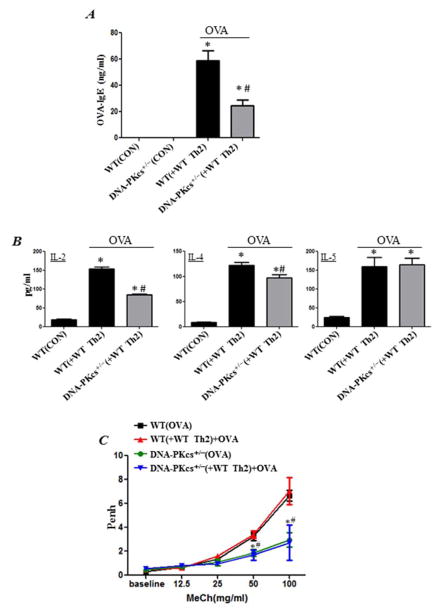Figure 6. Adoptive transfer of in vitro Th2-skewed CD4+ T cells partially reverses IgE and Th2 cytokine production but not AHR in OVA-exposed DNA-PKcs+/− mice.
Splenic CD4+ T cells from sacrificed OT-II mice were skewed towards Th2 population in presence of OT-II peptide. 1×106 cells/ mouse were injected i.v into the tail vein of each recipient mouse. All mice were subjected to aerosolized OVA challenge daily for 4 days. Twenty four hour after the last OVA exposure, mice were subjected to Penh measurements then sacrificed 24 h later. (A) Assessment of sera for OVA-specific IgE. (B) Assessment of sera for IL-2, IL-4, or IL-5. *, difference from control WT mice; #, difference from WT mice receiving adoptive transfer (WT(+WT Th2)), p < 0.01. (C) Assessment of Penh in the different experimental groups 24 h after the last OVA challenge. Results are plotted as maximal fold increase of Penh relative to baseline and expressed as mean ± SEM where n=6 mice per group. *, difference from OVA-sensitized and challenged WT mice (WT(OVA)); #, difference from OVA-challenged WT-Th2 recipient mice (WT(+WT Th2)+OVA)); p < 0.01.

